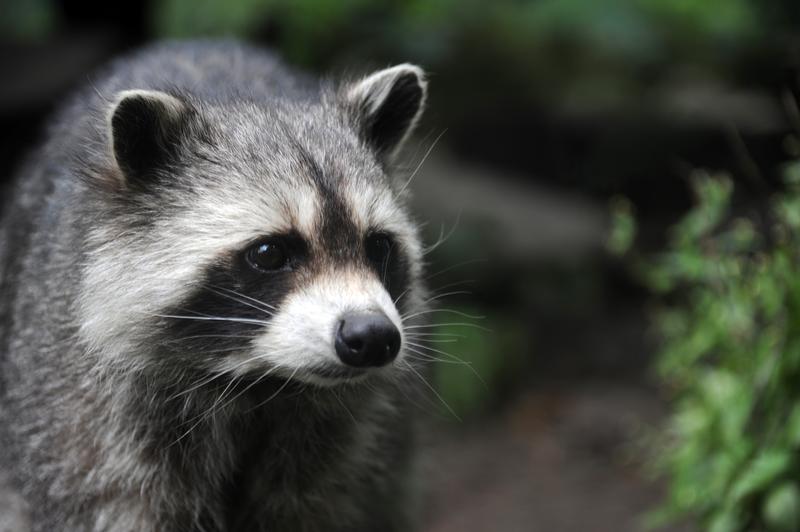Cute but Controversial: Position Paper Dispels Myths about Invasive Raccoons
Raccoons are often seen as cute and harmless wildlife – but that is a misconception. With an estimated population of 1.6 to 2 million in Germany, these invasive predators pose a serious threat to native species. Scientists from Goethe University Frankfurt have addressed widespread misinformation in a position paper and are calling for effective protective measures. The message is clear: species protection must not be sacrificed to our fondness for “adorable” animals.
FRANKFURT. “Raccoons are native animals,” “They reproduce faster when hunted,” “Everything about raccoons has already been said” – these are just a few of the persistent myths circulating about raccoons in Germany. They have become deeply entrenched in public discourse and pose a serious challenge to nature conservation in Germany. Contrary to the widespread belief that these charming creatures are harmless newcomers, the North American raccoon is an invasive predator and a serious threat to many native animals – from birds and amphibians to bats.
There has been significant national coverage on the appearance, spread, impact, and management of raccoons. Unfortunately, this information is not always based on sound science. That’s what researchers from Goethe University and the Senckenberg Biodiversity and Climate Research Centre are seeking to change. “The public perception of raccoons as charismatic wildlife fails to reflect the regional ecological damage caused by this invasive species in Germany and Europe,” says Prof. Dr. Sven Klimpel, head of the collaborative research project ZOWIAC (Zoonotic and Wildlife Ecological Impacts of Invasive Carnivores). Together with his colleagues, the parasitologist has reviewed popular assumptions about raccoons and subjected them to a critical fact-check. The result: a position paper that identifies nine widespread myths and provides clear evidence to refute them.
Alarming Numbers Speak for Themselves
With an estimated 1.6 to 2 million raccoons in Germany, the species has become one of the most common wild carnivores in Central Europe. “Since 2005, the number of raccoons hunted annually has quadrupled – now over 200,000 – and still the population continues to grow,” explains Dr. Norbert Peter, ZOWIAC project leader. Particularly dramatic: in cities like Kassel, there are now more than100 raccoons per 100 hectares – roughly one raccoon per soccer field – representing one of the highest predator densities in Europe.
The consequences for native species are regionally devastating. Studies show that raccoons specifically target breeding sites of amphibians, reptiles, and ground-nesting birds; they often enter into a kind of “hunting frenzy”, killing entire clutches – far more than they can consume. “We are documenting a dramatic decline in sensitive species in areas with high raccoon densities,” says Peter.
Myths with Fatal Consequences
Particularly problematic are widespread misconceptions: One common claim is that hunting raccoons causes them to reproduce more – a misinterpretation of a 35-year-old U.S. study. Another false belief is that raccoons live in a “matriarchy” that hunting would disrupt. “These myths have real-world consequences,” warns Dr. Dorian Dörge, ZOWIAC’s scientific coordinator. “They prevent necessary protective measures and thereby endanger already threatened native species.”
Other seemingly humane alternatives, such as neutering, are not viable: with two million animals, the task is practically impossible and legally problematic, since EU regulations explicitly prohibit the release of invasive species after capture. Another issue is emotional: raccoons are perceived as especially sympathetic animals. Research shows that this positive emotional bias strongly influences public opinion – and can hinder or block necessary control measures.
Clear Policy Recommendations
The scientists call for a decisive shift in thinking: federal funding for coordinated management plans across German states, intensive hunting in protected areas with endangered species, and – above all – fact-based education rather than emotional storytelling. “We must implement the legal requirements for species protection consistently and not let them be overridden by sympathy for charismatic animals,” urges Klimpel, addressing both policymakers and the public.
The full position paper is available on ZOWIAC’s website: https://zowiac.eu/2025/07/08/faktencheck-waschbaeren/ (in German).
It is aimed at public authorities, conservation organizations, the media, and all citizens interested in fact-based information on one of Germany’s most pressing conservation issues.
Wissenschaftlicher Ansprechpartner:
Prof. Dr. Sven Klimpel, Dr. Dorian Dörge, Dr. Norbert Peter
Institut für Ökologie, Evolution und Diversität
Goethe-Universität Frankfurt
Senckenberg Biodiversität und Klima Forschungszentrum
Tel. 069 798-42237
069 798-42069
069 798-42212
klimpel@bio.uni-frankfurt.de
doerge@bio.uni-frankfurt.de
peter@bio.uni-frankfurt.de
Weitere Informationen:
https://zowiac.eu/2025/07/08/faktencheck-waschbaeren/ Position Paper ZOWIAC (in German)
Die semantisch ähnlichsten Pressemitteilungen im idw


